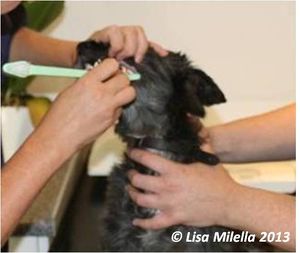Difference between revisions of "Oral Hygiene - Small Animal"
| Line 16: | Line 16: | ||
:[[Dental Diet|Diet]] | :[[Dental Diet|Diet]] | ||
:[[Dental Chews|Chews]] | :[[Dental Chews|Chews]] | ||
| − | |image = | + | |image = Brushing dog teeth.jpg |
|resources = | |resources = | ||
}} | }} | ||
| Line 24: | Line 24: | ||
[[Category:Oral Hygiene]] | [[Category:Oral Hygiene]] | ||
| + | [[Category:Small Animal Dentistry]] | ||
[[Category:To Do - Dentistry preMars]] | [[Category:To Do - Dentistry preMars]] | ||
Revision as of 15:22, 26 September 2013
| ||||||||
| ||||||||

